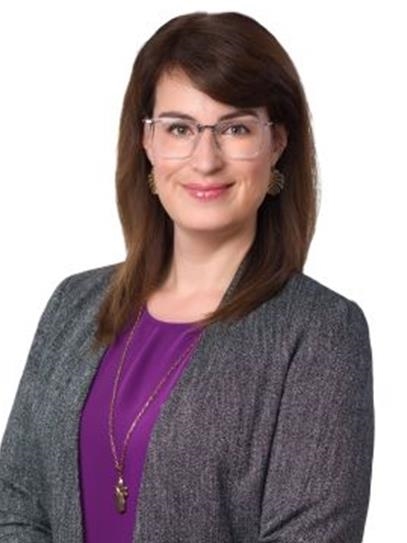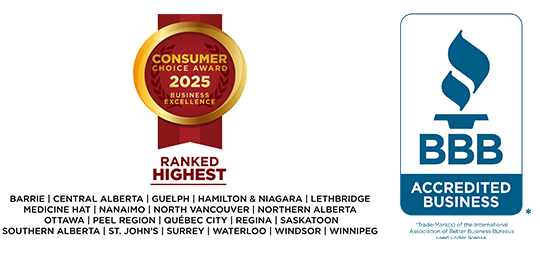Nearly half of Albertans (47%, +2 pts) report they are $200 or less away from financial insolvency each month — more than those in any other province — according to the latest MNP Consumer Debt Index. This includes three in 10 (30%, -2 pts) who say they are financially insolvent. Albertans are more likely than those in any other province (41%) to report feeling anxious or stressed about their financial situation as the high cost of living and economic uncertainty continue to weigh on households. About three in 10 say they feel stalled, having to put their lives on hold (29%) or are constantly putting out financial fires as they face one unexpected cost after another (28%).
“About 1.8 million Albertans say they are close to financial insolvency, based on the proportion surveyed, with little ability to absorb any unexpected expenses or income disruptions,” says Lindsay Burchill, a Licensed Insolvency Trustee with Alberta-based MNP LTD. “Albertans have not witnessed this kind of economic uncertainty since the COVID-19 pandemic. Many households are feeling anxious and stuck in a financial holding pattern — delaying major life or financial decisions as they try to navigate persistent economic pressures against a volatile global backdrop.”
Uncertainty and the cost of living are translating into day-to-day financial strain, with nearly two in five Albertans (38%) reporting they feel stuck living paycheque to paycheque. Two in five Albertans (44%) say they are feeling more cautious with how they manage their money due to current financial pressures — more than those in any other province.
“Those making cautious choices or putting off major decisions may still find themselves struggling to get by in this unpredictable financial climate, despite two interest rate pauses,” says Burchill. “Albertans are the most likely among the provinces to say they’re tightening their spending, yet those efforts may not be enough for many vulnerable households. It can feel like they’re constantly putting out financial fires.”
Albertans are more likely than those in any other province (51%) to say they have reduced discretionary spending in response to current financial pressures. More than a third (35%) are increasing savings or building emergency funds, while a quarter (25%) are prioritizing debt repayment. Nearly a quarter (24%) of Albertans are putting off important life goals, such as buying a home, starting a family, or changing careers.
There are signs that some Albertans are beginning to regain a modest sense of financial control amid economic uncertainty. The average amount households have left at the end of the month has increased to $951, up $101 from last quarter. This potentially signals that more Albertans are building a financial buffer in case of further economic disruption.
“While challenges persist, these are modest but encouraging signs that some Albertans may be starting to rebuild a bit of a financial cushion,” says Burchill. “Even small steps toward stability can make a meaningful difference in the current climate.”
While a third of Albertans (36%, unchanged) this quarter still rate their debt situation as excellent, one in five (21%) rate it as terrible, increasing six points since last quarter. This increase points to a growing proportion who are feeling overwhelmed by their debt.
Two-thirds of Albertans (66%, +2 pts) say they desperately need interest rates to go down, despite interest rates holding steady twice this year. Significantly more Albertans this quarter say they are concerned rising interest rates could drive them toward Bankruptcy (43%), increasing nine points. A significant proportion of Albertans (46%, +1 pt) remains concerned about their ability to repay their debts, even if interest rates decline.
“Persistent fears linger around interest rates,” says Burchill. “For some households, the damage is already done after years of rising costs, high interest rates, and depleted savings. There may be some deep worries that more hardship could still be on the horizon.”
Three in 10 Albertans (31%, unchanged) expect their debt situation to improve one year from now, and a larger proportion (40%, +3 pts) believe it will improve in five years. However, one in six (16%, +4 pts) say they expect their debt to worsen a year from now, and a slightly smaller proportion (14%, +5 pts) believe it will worsen five years from now. Fewer this quarter believe they will be able to cover all living expenses in the next year without taking on more debt (50%, -3 pts).
Burchill urges those feeling overwhelmed by debt or financial pressure to speak with a Licensed Insolvency Trustee. Licensed Insolvency Trustees can provide unbiased advice on the full range of debt relief options available and administer personalized solutions to help individuals regain control of their finances.
“Whether you’re falling behind on payments, receiving calls from creditors, or simply feeling unsure about what to do next, a Licensed Insolvency Trustee can help you make sense of your situation,” says Burchill. “These professionals offer unbiased guidance in a supportive environment — so you can explore all the options available to you.”
This quarter, more than two in five Albertans (44%, -2 pts) say they regret the amount of debt they have taken on, and two in five (41%, +2 pts) are concerned about their current debt level.
Burchill says it’s a sure sign it’s time to ask for help if financial stress is causing sleepless nights. “Many are experiencing similar financial pressures. Even reaching out to understand your options can ease some of the stress. Seeking help early means you’ll likely have more options — and a clearer path toward financial peace of mind.”
MNP’s national team of Licensed Insolvency Trustees offers free consultations across the country to help severely indebted Canadians get unbiased debt advice, understand their rights, and determine the best path forward. Licensed Insolvency Trustees are the only federally regulated debt professionals who can assist with all the debt relief options, including Consumer Proposals and Bankruptcy, stop harassment from debt collectors, and discharge people from debt.
About MNP LTD
MNP LTD, a division of the national accounting firm MNP LLP, is the largest insolvency practice in Canada. For more than 50 years, our experienced team of Licensed Insolvency Trustees and advisors have been working with individuals to help them recover from times of financial distress and regain control of their finances. With more than 240 offices from coast to coast, MNP helps thousands of Canadians each year who are struggling with an overwhelming amount of debt. Visit MNPdebt.ca to contact a Licensed Insolvency Trustee or use our free Do-it-Yourself (DIY) debt assessment tools. For regular, bite-sized insights about debt and personal finances, subscribe to the MNP 3-Minute Debt Break Podcast.
About the MNP Consumer Debt Index
The MNP Consumer Debt Index measures Canadians’ attitudes toward their consumer debt and gauges their ability to pay their bills, endure unexpected expenses, and absorb interest-rate fluctuations without approaching insolvency. Conducted by Ipsos and updated quarterly, the Index is an industry-leading barometer of financial pressure or relief among Canadians.
Now in its thirty-third wave, the Index has held firm at 88 points – the same level as last quarter. Visit MNPdebt.ca/CDI to learn more.
The data was compiled by Ipsos on behalf of MNP LTD between June 9 and June 13, 2025. For this survey, a sample of 2,000 Canadians aged 18 years and over was interviewed. Weighting was then employed to balance demographics to ensure that the sample's composition reflects that of the adult population according to Census data and to provide results intended to approximate the sample universe. The precision of Ipsos online polls is measured using a credibility interval. In this case, the poll is accurate to within ±2.5 percentage points, 19 times out of 20, had all Canadian adults been polled. The credibility interval will be wider among subsets of the population. All sample surveys and polls may be subject to other sources of error, including, but not limited to, coverage error and measurement error.



